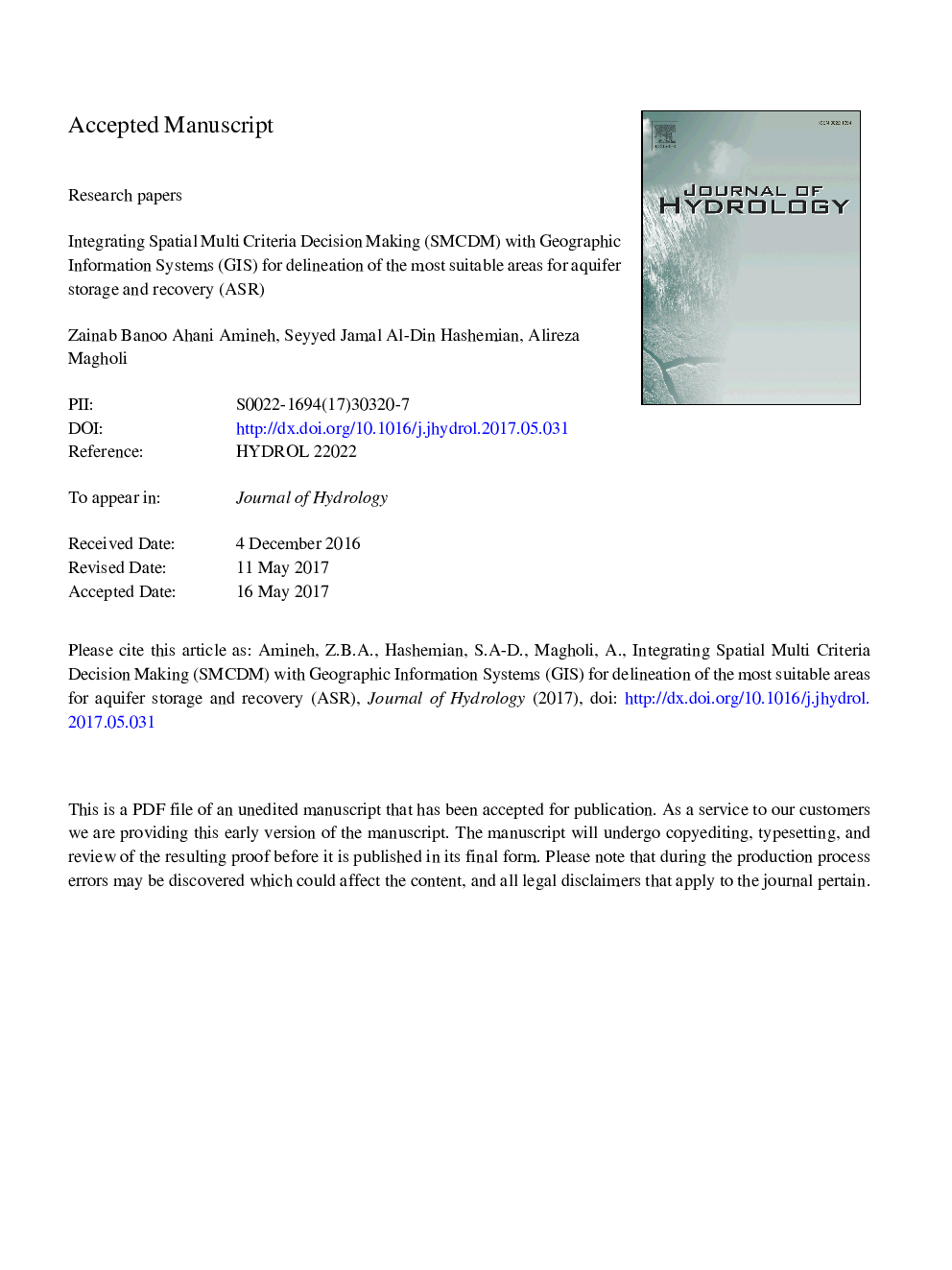| کد مقاله | کد نشریه | سال انتشار | مقاله انگلیسی | نسخه تمام متن |
|---|---|---|---|---|
| 5770923 | 1629903 | 2017 | 23 صفحه PDF | دانلود رایگان |
عنوان انگلیسی مقاله ISI
Integrating Spatial Multi Criteria Decision Making (SMCDM) with Geographic Information Systems (GIS) for delineation of the most suitable areas for aquifer storage and recovery (ASR)
دانلود مقاله + سفارش ترجمه
دانلود مقاله ISI انگلیسی
رایگان برای ایرانیان
کلمات کلیدی
موضوعات مرتبط
مهندسی و علوم پایه
علوم زمین و سیارات
فرآیندهای سطح زمین
پیش نمایش صفحه اول مقاله

چکیده انگلیسی
Hamoon-Jazmoorian plain is located in southeast of Iran. Overexploitation of groundwater in this plain has led to water level decline and caused serious problems such as land subsidence, aquifer destruction and water quality degradation. The increasing population and agricultural development along with drought and climate change, have further increased the pressure on water resources in this region over the last years. In order to overcome such crisis, introduction of surface water into an aquifer at particular locations can be a suitable solution. A wide variety of methods have been developed to recharge groundwater, one of which is aquifer storage and recovery (ASR). One of the fundamental principles of making such systems is delineation of suitable areas based on scientific and natural facts in order to achieve relevant objectives. To that end, the Multi Criteria Decision Making (MCDM) in conjunction with the Geographic Information Systems (GIS) was applied in this study. More specifically, nine main parameters including depth of runoff as the considered source of water, morphology of the earth surface features such as geology, geomorphology, land use and land cover, drainage and aquifer characteristics along with quality of water in the aquifer were considered as the main layers in GIS. The runoff water available for artificial recharge in the basin was estimated through Soil Conservation Service (SCS) curve number method. The weighted curve number for each watershed was derived through spatial intersection of land use and hydrological soil group layers. Other thematic layers were extracted from satellite images, topographical map, and other collateral data sources, then weighed according to their influence in locating process. The Analytical Hierarchy Process (AHP) method was then used to calculate weights of individual parameters. The normalized weighted layers were then overlaid to build up the recharge potential map. The results revealed that 34% of the total area is suitable and very suitable for groundwater recharge.
ناشر
Database: Elsevier - ScienceDirect (ساینس دایرکت)
Journal: Journal of Hydrology - Volume 551, August 2017, Pages 577-595
Journal: Journal of Hydrology - Volume 551, August 2017, Pages 577-595
نویسندگان
Zainab Banoo Ahani Amineh, Seyyed Jamal Al-Din Hashemian, Alireza Magholi,